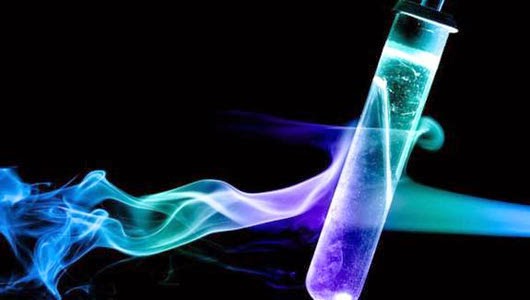Chemistry! Hooray!

Friday, 23 May 2014
Review Links for Chapter 10
10.1 Quiz
https://sciencesource.pearsoncanada.ca/quizzes/quiz_10_1paqKt.htm
10.2 Quiz
https://sciencesource.pearsoncanada.ca/quizzes/quiz_10_2KLylM.htm
10.3 Quiz
https://sciencesource.pearsoncanada.ca/quizzes/quiz_10_3YEEdN.htm
10.4 Quiz
https://sciencesource.pearsoncanada.ca/quizzes/quiz_10_4fY7Rd.htm
10.1 Crossword
https://sciencesource.pearsoncanada.ca/puzzles/puzzle_10_1/
10.2 Crossword
https://sciencesource.pearsoncanada.ca/puzzles/puzzle_10_2/
10.3 Crossword
https://sciencesource.pearsoncanada.ca/puzzles/puzzle_10_3/
10.4 Crossword
https://sciencesource.pearsoncanada.ca/puzzles/puzzle_10_4/
Chapter 10 Review Quiz
http://wps.pearsoned.ca/ca_school_ontarioscience_7-8/102/26141/6692106.cw/content/index.html
Chapter 10 Matching Terms
https://sciencesource.pearsoncanada.ca/resources/gr7_matchquiz_ch10/
Chapter 10 Labeling Practice
https://sciencesource.pearsoncanada.ca/resources/gr7_labelquiz_ch10/
Convection Example Video
https://sciencesource.pearsoncanada.ca/resources/battlingbottles.php
Heat Radiation Animation
https://sciencesource.pearsoncanada.ca/resources/radiation.swf
Convection, Convection, Radiation Animation
http://www.wisc-online.com/objects/heattransfer/
Pop-Can Implosion Video
https://sciencesource.pearsoncanada.ca/pgs/video.php?id=12
Adding Heat to Particles Activity/Animation
https://sciencesource.pearsoncanada.ca/resources/slg.swf
Forms of Energy Matching
https://sciencesource.pearsoncanada.ca/resources/03_forms.swf
Thursday, 22 May 2014
Grade 7 Chapter 10 Test Dates
Classes 7B, 7C, 7D, and 7E have their Chapter 10 Test on Tuesday May 27th.
Class 7A has their test on Wednesday May 28th.
Wednesday, 21 May 2014
Chapter 10 Test Study Guide
Please study the following in order to be prepared for the test:
1. The Putt-Putt Boat
4. The 6 Changes of State e.g., evaporation, condensation, etc.
5. Review worksheets on expansion and contraction of solids liquids and gases. All the answers can be found on the blog.
1. The Putt-Putt Boat
- Review how a Putt-Putt Boat works
- Identify energy transformations occurring during the running of the boat; e.g., chemical energy to thermal energy and light energy
- Identify how thermal energy is transferred during the running of the boat i.e., conduction, convection, and radiation.
- Identify changes of state occurring during the running of the boat e.g., evaporation
2. Energy Transformations e.g., electrical to mechanical
3. The 3 Methods of Thermal Energy Transfer i.e., conduction, convection and radiation. All the notes can be found on the blog.
4. The 6 Changes of State e.g., evaporation, condensation, etc.
5. Review worksheets on expansion and contraction of solids liquids and gases. All the answers can be found on the blog.
How Does the Putt-Putt Boat Work?
How does
the putt-putt boat work?
When we
heat the boiler with the candle, the water droplets inside the boiler
evaporate; this causes expansion. A “click” can be heard as the boiler is
pushed outward.
The
expanding gas forces the water out of the straws; this propels the boat
forward.
A partial
vacuum is left inside the boiler; this is an area of low pressure compared to
the atmospheric pressure outside. A “click” can be heard as the boiler is
forced inward.
The higher
atmospheric pressure forces water back into the straws and the engine which
restarts the cycle.
This cycle
repeats many times per second.
Additional reading can be found by following the link below:
http://www.sciencetoymaker.org/boat/howBoatWorksl.html
Additional reading can be found by following the link below:
http://www.sciencetoymaker.org/boat/howBoatWorksl.html
Thursday, 1 May 2014
Mr. Meles' Youtube Channel
You can find the Putt-Putt video playlist here. There are other interesting Science and Math videos here too!
https://www.youtube.com/user/TheMrMeles
Thermal Energy Transfer: Radiation
Radiation
·
Radiant
energy is the transfer of energy by invisible waves given
off by the energy source
·
These invisible waves are called
infrared waves (a type of electromagnetic wave from the sun)
·
Infrared waves are given off by
all heat sources, including you
·
Heat is radiant energy from the
sun that reaches your skin
·
Radiant energy warms up objects
when the waves of radiant energy come into contact with matter making the
particles vibrate faster
Answers to Radiation Worksheet
Answers to Radiation Worksheet
1)
Radiation waves are absorbed by the person in front of you so you do not feel
the heat.
2) White
clothing reflects infrared radiation and black clothing will absorb this
radiation.
3) The
shiny suits will reflect the strong heat radiation from the sun so the
astronauts do not overheat.
4)
Insulation is a poor heat conductor and it contains glass pieces to reflect
heat back into your home.
5) In
summer, heat is reflected out into the environment and in winter, heat is
reflected back into your home.
Thermal Energy Transfer: Convection
Convection
·
Convection
- The transfer of thermal energy by moving particles in fluids
·
As the particles of fluids (gases
and liquids) are heated, they move faster and expand; this expansion makes the
fluids less dense so they rise
·
When warmer fluids rise, cooler
fluids move downwards; this creates a “convection current”
·
The convection current continues
in a pot of soup because the warmer soup particles in a pot cool when they make
contact with the air and then sink. These particles are heated again once they
meet the bottom of the pot.
·
Convection currents help heat your
home through your furnace heating system.
Thermal Energy Transfer: Conduction
Conduction
·
The transfer of heat through a
solid or between a solid and another solid, a liquid, or a gas that is in contact
with it
·
Conduction can also occur from liquid
to solid and gas to solid.
·
Conduction always occurs from a warmer
region to a cooler region.
·
Conduction occurs when warmer
particles bump into cooler particles making them vibrate faster.
·
Metals are better heat conductors
than non-metals because free electrons carry heat quickly through the material.
Answers to Conduction Worksheet
Answers to Conduction Worksheet
On a cold winter day, why
would an iron post in a park feel much colder to the touch than a wooden bench?
Iron is a better heat conductor than wood. The iron will conduct the
heat away from your hand faster than wood; this makes your hand feel colder when
you touch iron
Potatoes cook from the outside
in.
a) Why does a small potato cook faster than a large
potato?
Smaller potatoes have fewer particles, so heat takes less time to reach
the centre.
b) Why does sticking a metal skewer through the middle of
a potato make it cook faster?
Heat will be conducted through the skewer into the centre of the potato
and it will cook from the inside out.
Subscribe to:
Comments (Atom)